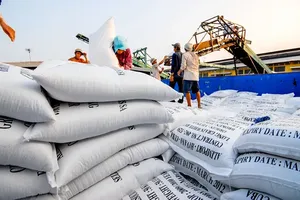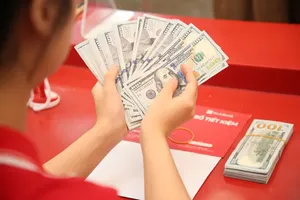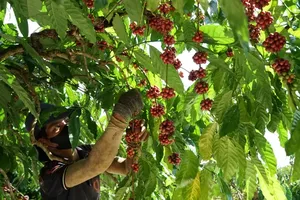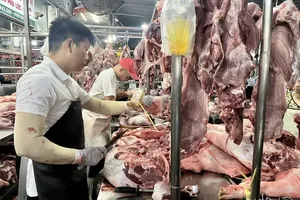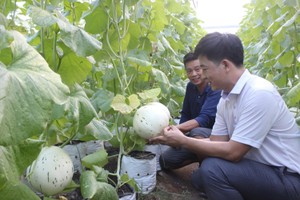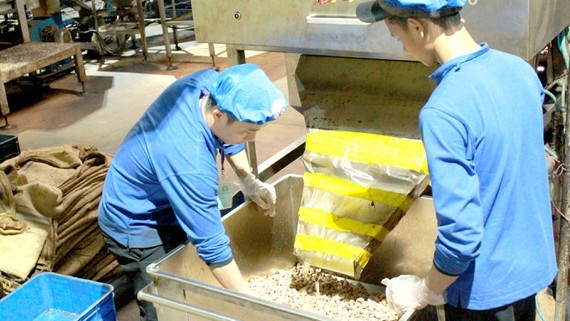
Lately, the Standing Committee of the Vietnam Cashew Association (Vinacas) warned that enterprises must be cautious with transactions during this time and should consider carefully before deciding to buy raw cashew from African countries, even with the neighboring country Cambodia.
Accordingly, enterprises need to analyze information from various sources, thereby evaluating the market situation and other impacts, especially the impacts of the spread of the Covid-19 and actual capacity of enterprises before deciding to sign contracts to purchase raw cashew or sell cashew nuts, including whether to stockpile raw materials or finished products or not, to ensure business effectiveness of enterprises. If enterprises have not balanced the cost and the selling price, or have not had any consumption contracts, they should not rush to buy raw cashew.
Of the cashew nut market share of Vietnamese enterprises, the US accounted for nearly 30 percent, the EU and other countries held 56 percent, and China got more than 14 percent. Although accounting for a small proportion, China has been playing an important role in affecting the prices of other markets for a long time. The steadiness in the price of cashew nuts in the Chinese market is a counterbalance that contributes to keeping the prices at the remaining markets.
With the current developments, when it is unable to determine exactly how long the Covid-19 outbreak will last, Vinacas said that the export of cashew nuts to China will more or less encounter disadvantages. This year, whether China will consume more or fewer cashew nuts is always a question and a matter that needs to be paid attention constantly. Once the consumption of cashew nuts in China’s market weakens, it is the opportunity for importers to cause pressure to lower the price of cashew nuts.
Amid the chaotic situation, there is a high possibility that Western importers will reduce the number of orders to gain a lower price. Therefore, the negotiations to import raw cashew from West Africa will also be tough. It is tougher for signed contracts, once enterprises want to negotiate again.
Moreover, in comparison with cashew nuts, Chinese people consume much more almonds. Due to the complicated developments of the Covid-19, the amount of almonds imported into China has dropped drastically, causing the price of almonds in the global market to decline. As a result, like previous times, a part of consumers in the global market has shifted to consume almonds, making cashew nut consumption affected.
Even after the outbreak, the life of Chinese people will be difficult for a while to return to the routine, so the number of imported goods will be lower than previous years because cashew nut is not the main food in the diet. It is the reason why the Vinacas forecast that the volume of cashew nuts exported to China might be declined this year. Currently, the price of cashew nuts has been adjusting negatively, hurting the business performance of enterprises. On the contrary, while cashew nuts saw a sharp decrease, the price of raw cashew in Africa just slightly dropped. This is a difficult problem for enterprises when balancing the output and input costs. With these analyses, the Vinacas forecast that the growth rate of the cashew nut will be affected. If the growth rate of the cashew industry was positive last year, it will possibly be negative this year.
From another perspective, according to the analysis of a cashew expert, the ‘mental disorder’ is dominating the cashew market, as the Covid-19 outbreak has been triggering unexpected changes. China is an important market but the market share merely accounts for 10 percent of the global cashew nut consumption. Besides, every year, the number of imported goods into China, of which, more than 90 percent is imported from Vietnam, also decreases significantly in February and March, after the peak consumption on the occasion of the lunar New Year.
Perhaps, it is still too early to give in in a panic. If the pandemic lasts for a few more months, its impacts will be devastating. But if the pandemic is controlled at the end of March, its impacts on the consumption of cashew nuts in China and the world will not be significant.
Amid the context of strong growth in the global demand and the limitation of the inventory of cashew in the last crop, it seems that the panic that started earlier has been exaggerated and might lead to a sudden increase in the next cashew crop.
Accordingly, enterprises need to analyze information from various sources, thereby evaluating the market situation and other impacts, especially the impacts of the spread of the Covid-19 and actual capacity of enterprises before deciding to sign contracts to purchase raw cashew or sell cashew nuts, including whether to stockpile raw materials or finished products or not, to ensure business effectiveness of enterprises. If enterprises have not balanced the cost and the selling price, or have not had any consumption contracts, they should not rush to buy raw cashew.
Of the cashew nut market share of Vietnamese enterprises, the US accounted for nearly 30 percent, the EU and other countries held 56 percent, and China got more than 14 percent. Although accounting for a small proportion, China has been playing an important role in affecting the prices of other markets for a long time. The steadiness in the price of cashew nuts in the Chinese market is a counterbalance that contributes to keeping the prices at the remaining markets.
With the current developments, when it is unable to determine exactly how long the Covid-19 outbreak will last, Vinacas said that the export of cashew nuts to China will more or less encounter disadvantages. This year, whether China will consume more or fewer cashew nuts is always a question and a matter that needs to be paid attention constantly. Once the consumption of cashew nuts in China’s market weakens, it is the opportunity for importers to cause pressure to lower the price of cashew nuts.
Amid the chaotic situation, there is a high possibility that Western importers will reduce the number of orders to gain a lower price. Therefore, the negotiations to import raw cashew from West Africa will also be tough. It is tougher for signed contracts, once enterprises want to negotiate again.
Moreover, in comparison with cashew nuts, Chinese people consume much more almonds. Due to the complicated developments of the Covid-19, the amount of almonds imported into China has dropped drastically, causing the price of almonds in the global market to decline. As a result, like previous times, a part of consumers in the global market has shifted to consume almonds, making cashew nut consumption affected.
Even after the outbreak, the life of Chinese people will be difficult for a while to return to the routine, so the number of imported goods will be lower than previous years because cashew nut is not the main food in the diet. It is the reason why the Vinacas forecast that the volume of cashew nuts exported to China might be declined this year. Currently, the price of cashew nuts has been adjusting negatively, hurting the business performance of enterprises. On the contrary, while cashew nuts saw a sharp decrease, the price of raw cashew in Africa just slightly dropped. This is a difficult problem for enterprises when balancing the output and input costs. With these analyses, the Vinacas forecast that the growth rate of the cashew nut will be affected. If the growth rate of the cashew industry was positive last year, it will possibly be negative this year.
From another perspective, according to the analysis of a cashew expert, the ‘mental disorder’ is dominating the cashew market, as the Covid-19 outbreak has been triggering unexpected changes. China is an important market but the market share merely accounts for 10 percent of the global cashew nut consumption. Besides, every year, the number of imported goods into China, of which, more than 90 percent is imported from Vietnam, also decreases significantly in February and March, after the peak consumption on the occasion of the lunar New Year.
Perhaps, it is still too early to give in in a panic. If the pandemic lasts for a few more months, its impacts will be devastating. But if the pandemic is controlled at the end of March, its impacts on the consumption of cashew nuts in China and the world will not be significant.
Amid the context of strong growth in the global demand and the limitation of the inventory of cashew in the last crop, it seems that the panic that started earlier has been exaggerated and might lead to a sudden increase in the next cashew crop.


